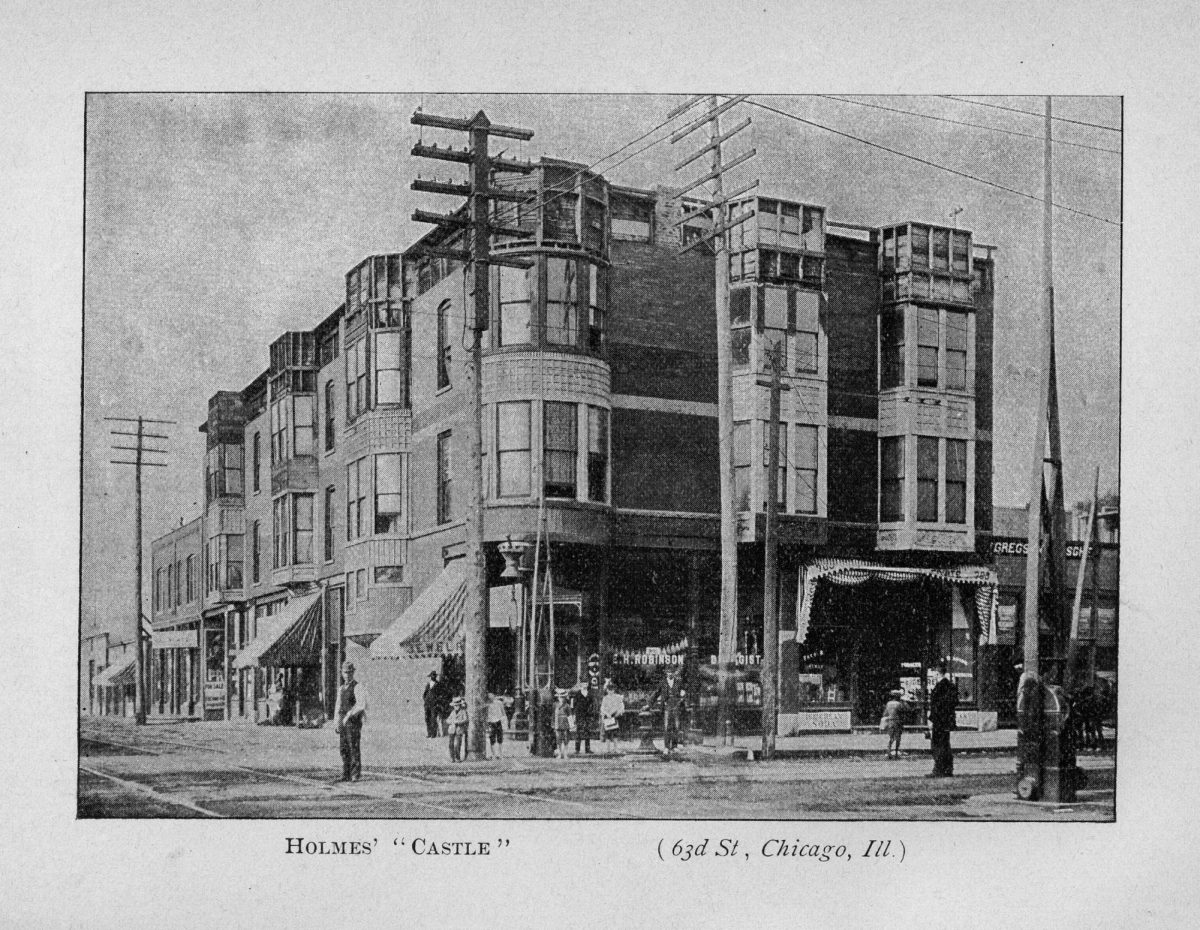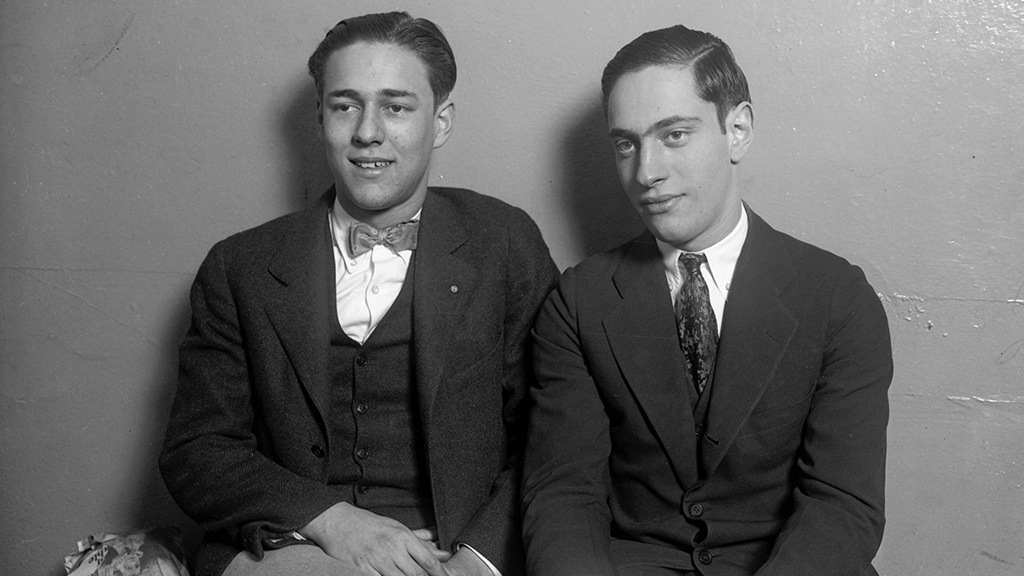Warning: The following contains graphic descriptions of murder, extreme violence, and descriptions of human remains. Reader discretion is advised.
The country’s first serial killer was a smooth-talking doctor who ran a murder hotel in Chicago. The tale of H. H. Holmes and his Murder Castle is perhaps one of the most fascinating cases in American history.
Body snatching was a common occurrence of the time. Different than graverobbing, body snatching instead focuses on the removal of a grave’s body, rather than any treasures or valuables buried alongside the remains. Stolen corpses would then be sold to medical schools or private practitioners as skeletal models or cadavers for anatomy research. Ambrose Bierce once sardonically defined body snatching in his book The Devil’s Dictionary as, “one who supplies the young physicians with that which the old physicians have supplied the undertaker.” In fairness though, it was a pretty cushy gig—if you weren’t afraid of a little dirt and rot. Body snatchers would be paid in the thousands (in today’s money), because at the time, the only bodies who could legally be dissected for medical research were those of executed criminals—which meant that demand always surpassed the supply.
Enter Herman Webster Mudgett. A bright young doctor who had graduated from high school at sixteen and always had a penchant for anything to do with death. While enrolled in the University of Michigan’s Department of Medicine and Surgery, he worked under Professor William James Herdman in the university’s anatomy lab. The pair were said to have aided body snatching to supply bodies as medical cadavers, which Mudgett then burned or disfigured with acid, then planted to it look as if they had been killed in an accident. Mudgett began taking out insurance policies on these people—before he stole, disfigured, and planted them—and would later collect the insurance money once the bodies were discovered. Later, he would admit to defrauding insurance companies with cadavers “several times” while in college.
Herman ended up in Philadelphia, where he was hired as a keeper at a psychiatric hospital. He quit after only a few days, and started a new job working at a local drugstore. When a child died after taking medicine purchased from the drugstore Mudgett was employed at, the young doctor denied any involvement and immediately left the city. Before he moved to Chicago, he changed his name to avoid any connection to his previous scams. Herman Webster Mudgett, M.D., donned the name Henry Howard Holmes.
Editor’s note: The print version of this article cuts off here. The rest of the story continues below.
In 1893, the bustling city of Chicago won the honor of hosting the World’s Columbian Exposition, the celebration of 400 years passing since Columbus’ alleged discovery of America. While the World’s Fair brought millions of visitors from all over the world, nearby, a clever killer hid in plain sight, capitalizing off of the slaughter of naive tourists.
In nearby Englewood, a suburb of Chicago, newly-renamed H. H. Holmes visits a corner drugstore—E. S. Holton Drugs. He introduces himself to the woman working there, offering himself as an employee. She informs him that her husband, the owner of the drugstore, is very ill and doesn’t have long. He insists that she should hire help, as the stress of a dying loved one is surely too much for her to deal with alone. Charmed by his empathetic demeanor and generosity, Mrs. Holton hires him. After her husband’s expected death (contrary to popular belief, Holmes was not involved in his passing), she suddenly sells the drugstore and mysteriously disappears. E. S. Holton Drugs is now under new ownership; in the property of one H. H. Holmes.
It’s late 1886, and Holmes has been in Chicago for a few months now. He married Myrta Belknap, despite still being legally married to Clara Lovering. A few weeks after his marriage to Myrta, he files for divorce against Clara, claiming infidelity. The case went nowhere, and it’s likely Clara never even knew about the suit. The divorce was never finalized. Three years later, Holmes and Myrta would have a daughter, Lucy. In 1894, in Colorado, Henry Howard Holmes married Georgiana Yoke while still married to both Clara and Myrta.
Soon after purchasing E. S. Holton Drugs, Holmes purchased the empty lot across the street, where he hired a construction company in 1887 to build a two-story mixed-use building, with a new drugstore and other retail spaces on the first floor, and apartments to rent on the second. Holmes declined to pay Aetna Iron and Steel, the steel company who supplied the building materials, as well as the architects, they took him to court in 1888. Four years later, he added a third floor that he claimed he intended to use as a hotel for the upcoming Chicago World’s Columbian Exposition. This horror-filled hotel became one of the deadliest in human history.
Aptly nicknamed “the Castle”, Holmes’ sinister creation hosted over a hundred rooms for guests, most of them outfitted spectacularly with unseen horrors. There were trapdoors, secret passageways, doors that locked from the outside, and staircases that led to nowhere. A few rooms were completely soundproofed, and contained hidden gas lines to asphyxiate guests at any whim of Holmes’. Throughout the Castle there were peepholes, trap doors, stairways that led to nowhere, and chutes that led straight into the basement.
But the basement itself was arguably Holmes’ pièce de résistance. It was his very own ‘lab’, containing a dissecting table, a stretching rack, and a crematory. Oftentimes, he would send his victim’s bodies down one of the many chutes, dissect them, strip them completely of the flesh, and sell them as human skeleton models to various medical schools around the country. In other cases, he would cremate them, or dissolve the bodies in pits of various acids.
Following the World’s Fair, Chicago’s economy started to falter. With economic instability a looming threat, H. H. Holmes completely abandoned the Castle, focusing instead on insurance fraud scams like the ones he committed in medical school. He became fast friends with Benjamin Pitezel, who became an accomplice to his fraudulent and murderous schemes.
H. H. Holmes was eventually apprehended. However, it was not for his countless murders—but rather a cheap swindle of stealing horses from Texas, then shipping and selling them to customers in St. Louis. He was sent to jail after being arrested.
His cellmate, Marion Hedgepeth, helped him concoct yet another insurance scheme. Holmes came up with the plan of taking out a ten thousand dollar insurance policy against himself, faking his death, then paying Hedgepeth $500 in exchange for a lawyer. After Holmes was released from jail on bail, he attempted their plan—however, it failed. The insurance company had become suspicious, and refused to pay the insurance compensation. Holmes tried the same scheme again, in Philadelphia, but instead with Pitezel being the one to fake his death and the promise of splitting the insurance money. He instead killed Pitezel and took the money for himself.
Marion Hedgepeth, his ex-cellmate, became irate over not receiving his portion of the money, and told the police about Holmes’ scam. The police tracked Holmes for a while, eventually catching up with him in Boston, Massachusetts. He was arrested on the still-outstanding warrant regarding the Texas horse swindle. When the police apprehended him, Holmes appeared to be prepared to flee the country. Becoming suspicious, the police obtained a warrant to search the Castle.
There, the police discovered the gruesomely efficient methods of murder that Holmes had hidden around the hotel. Bodies were discovered within the Castle, and many of them were so badly decomposed and dismembered that they were unidentifiable. The police were unable to determine how many bodies there were.
The investigation spread to Indianapolis and Toronto, leading to the discovery of the bodies of Benjamin Pitezel’s children, who had disappeared under mysterious circumstances during Holmes’ insurance scam spree. Holmes was linked to their murders, and arrested yet again.
In his confession, Holmes claimed that his usual murder method was suffocation: by an overdose of chloroform, overexposure to lighting gas fumes, or by trapping his victims in an airless vault. He also alleged that he starved his victims and burned them alive. He confessed to twenty eight other murders beyond those of the Pitezel children, but investigations and missing persons reports have linked Holmes to around two hundred murders total.
In May of 1896, the first American serial killer, Henry Howard Holmes, was hanged.
The Murder Castle was then turned into an attraction, named the “Holmes Horror Castle”, that was completely burned to the ground by an unknown arsonist shortly before its opening. The building was mostly rebuilt and turned into a post office until the late ‘30s. The story of H. H. Holmes had been largely forgotten until Erik Larson’s fantastic book, The Devil in the White City, revealed the true horrors buried in the history of Chicago’s Castle.









